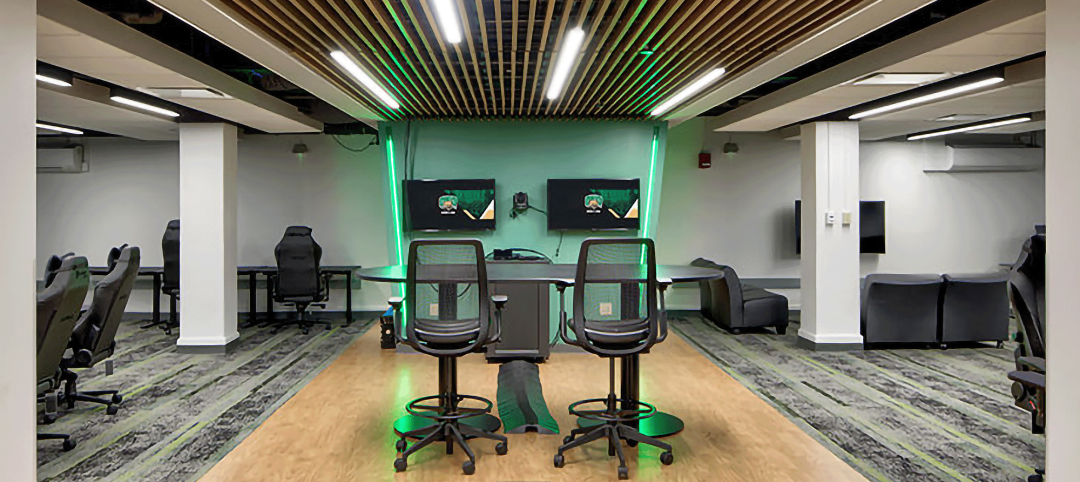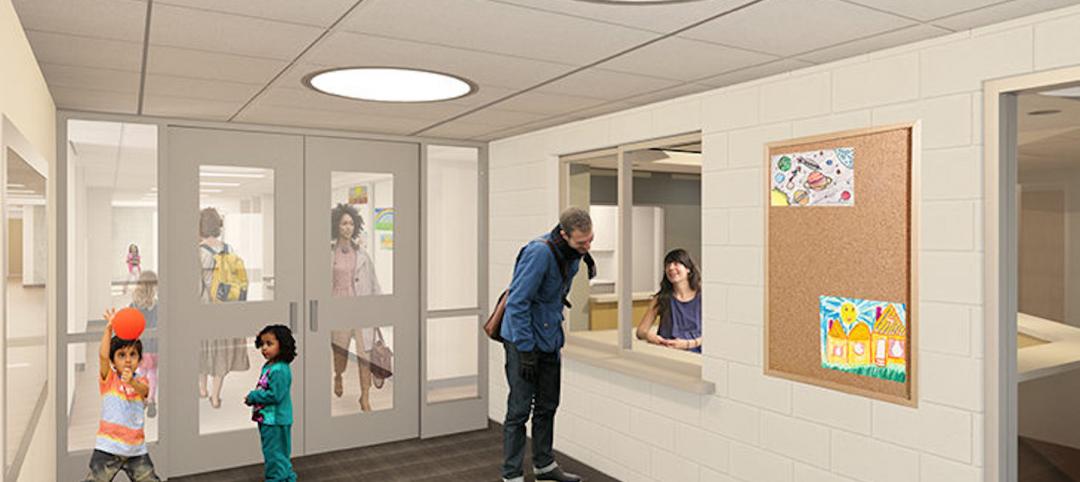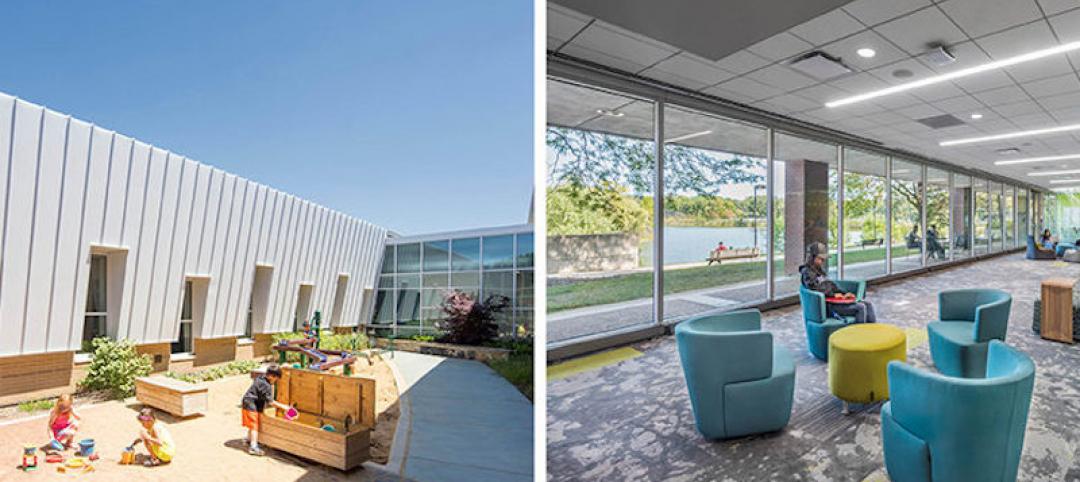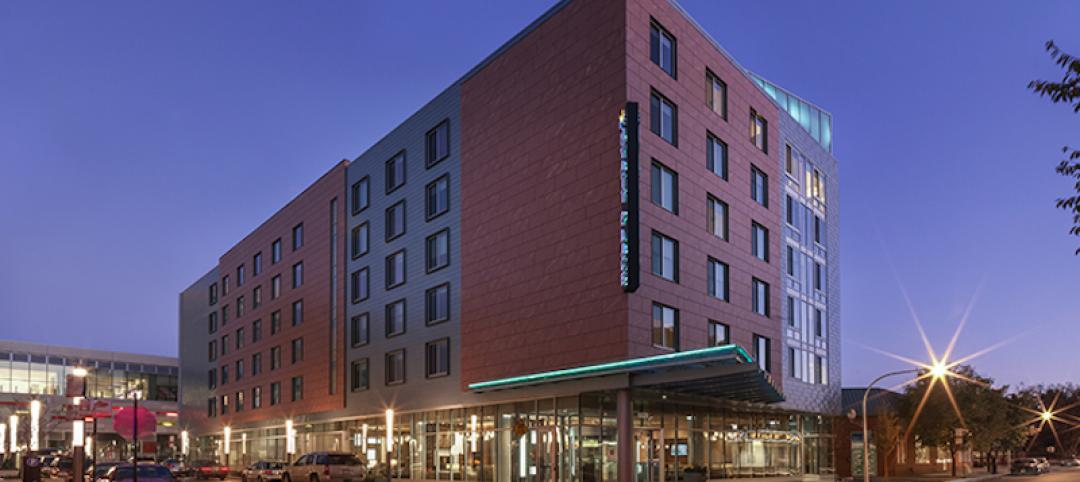“It sounded like a semitruck was coming,” said Adam Wouk, manager of disability services at Joliet Junior College, as he reflected on a student using a platform at another institution. “I wasn’t even the one using it, and I felt the eyes. I couldn’t imagine being the individual using it.”
Wouk’s observation exemplifies a scenario that plays out at higher education institutions throughout the country. Sometimes, devices intended to aid disabled students—that noisy ramp, for instance—end up putting the spotlight on them, resulting in a feeling of separation and even embarrassment. Other times, a lack of accessible amenities puts a burden on students with disabilities. Poorly designed ramps (or no ramps at all) relegate students in wheelchairs to awkward side doors. Dark corridors with uniform flooring create navigation difficulties for students with visual impairments.
The ADA code, signed into law in 1990, took a huge step in combating disability discrimination by requiring new facilities to include accommodations for those with disabilities. More 30 years later, ADA remains a critical component of building design. Twenty-six percent of adults have some disability (Centers for Disease Control and Prevention), and 25% of individuals with disabilities live in poverty (Statista).
To help people with disabilities feel part of the campus community, higher education institutions and architects must strive to create settings that not only adhere to but also exceed ADA guidelines. Fortunately, many institutions are adopting universal design, which goes beyond ADA to create facilities that benefit all students.
“The great thing about universal design is that you benefit, and so do I,” said Sylvia Kowalk, director of interior design at Legat Architects.
ADA at the Baseline
Any facilities built after 1990 must meet ADA requirements. They impact everything from small things like doors, faucets, and light switches to larger items like elevators (required in buildings with two floors), toilet rooms, and stairways. Buildings constructed before 1990 must still follow ADA requirements, although they are less stringent.
Institutions also have an obligation to continually update ADA accommodations. New hearing or visual impairment technologies, for instance, might prompt a college to upgrade its systems.
Institutions that fall short of ADA requirements face fines from the Department of Justice and lawsuits from individuals with disabilities.
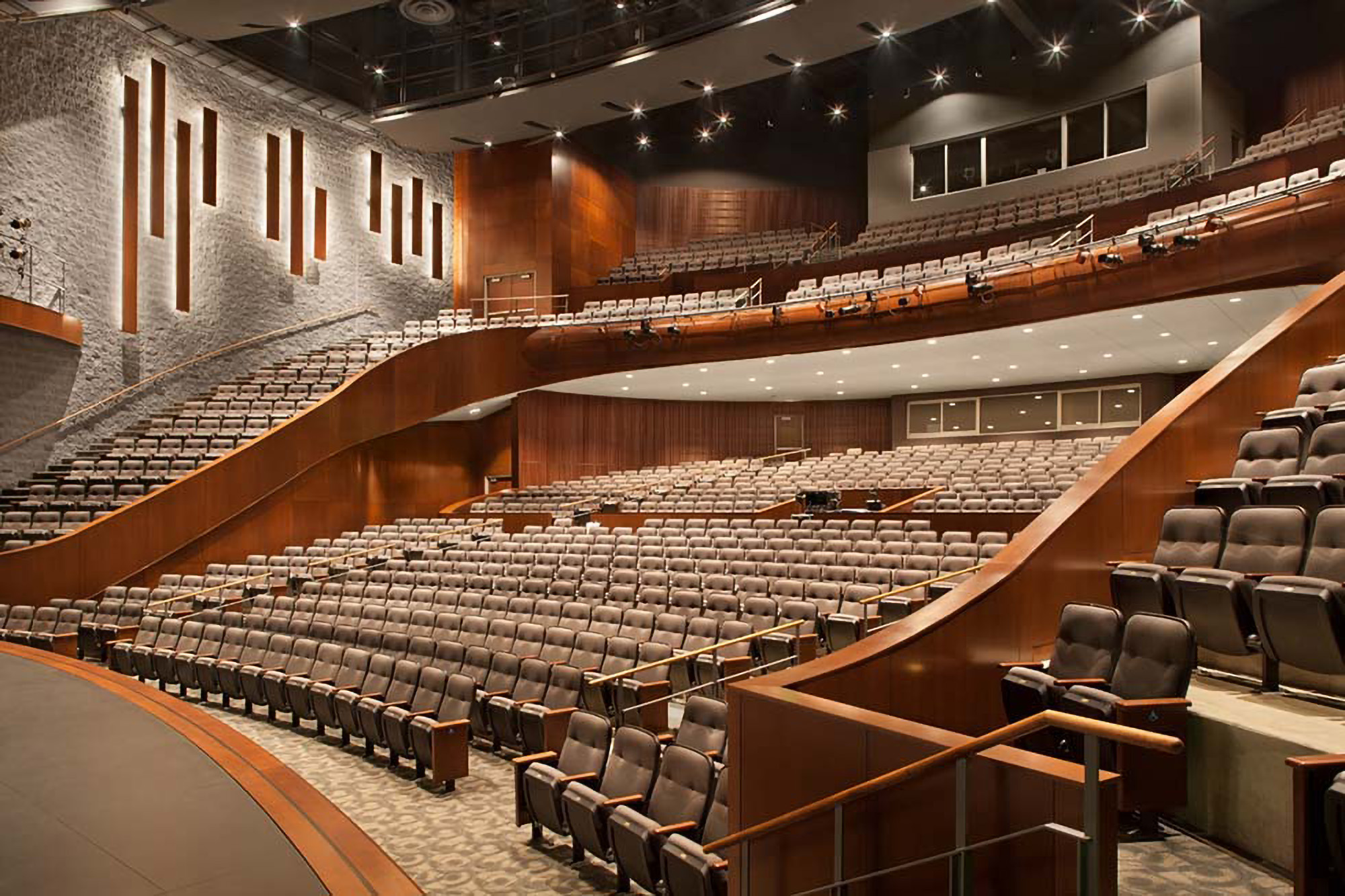
Pictured: Kent State University’s Tuscarawas Performing Arts Center. Photo courtesy Legat Architects
Nevertheless, Wouk and many others in a similar position contend that “ADA law is not nearly enough for individuals with disabilities.”
Enter universal design.
Beyond ADA to Universal Design
“At its core,” said Legat’s Adam Quigley, “universal design has to do with making buildings accessible but also making them beneficial to all students regardless of disability. The goal is to give the same experience to everyone.”
As an example of universal design, Wouk cites the able-bodied individual entering a building while weighed down with bags and books in both arms. “When that person uses an elbow to tap an automatic door opener, that’s good design—it helps the wheelchair user and many others benefit.”
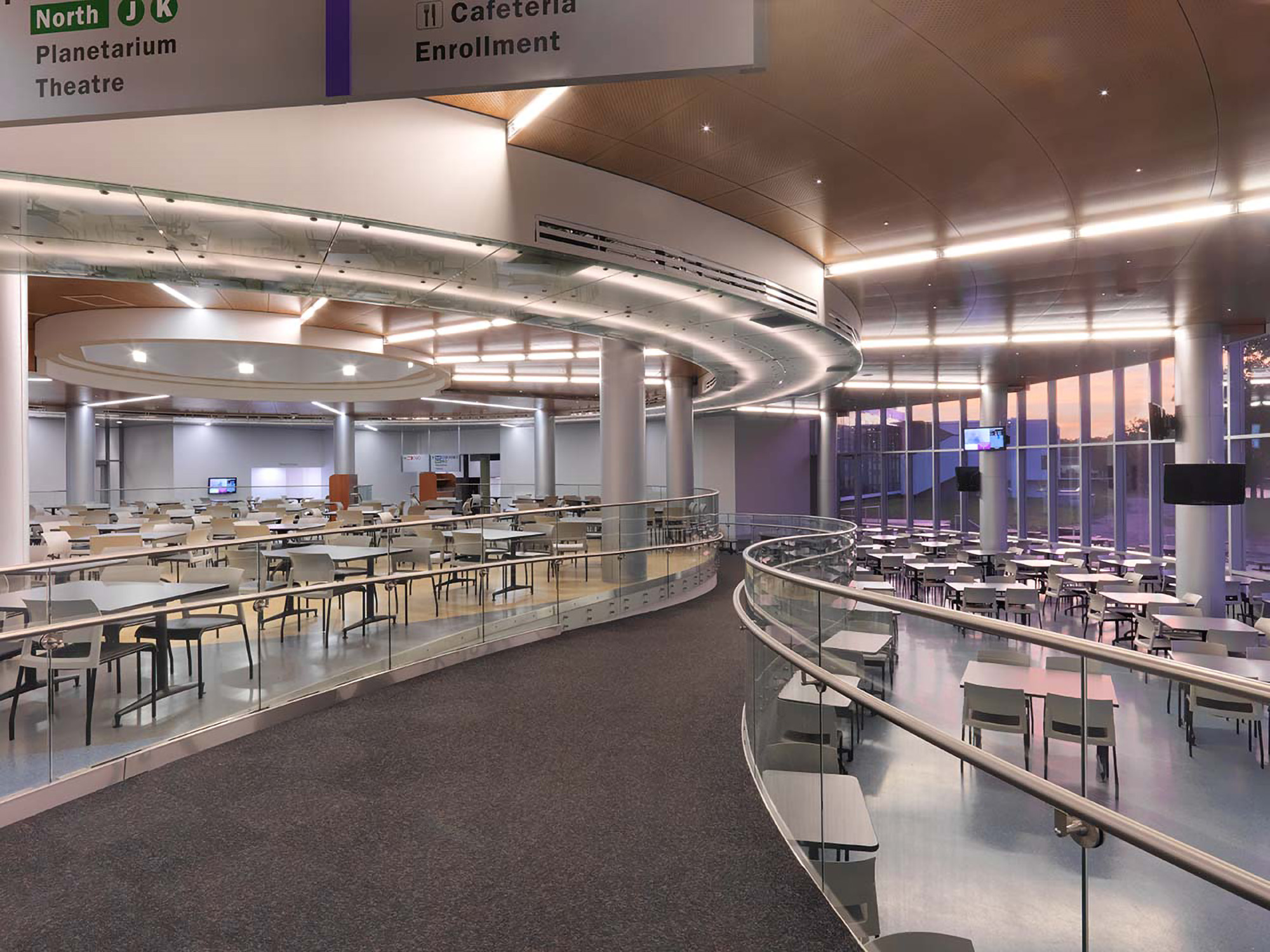
Kowalk said that interior design should also make everyone feel welcome. She cites an elevator at Harper College’s renovated David K. Hill Family Library. Instead of locating the elevator at the back of the space, the design brings it front and center next to a grand stair. “Everybody gets the same feel and welcome when you get into the space,” said Kowalk.
Universal design also considers those with visual and hearing impairments. Textural changes in flooring, for example, help those with limited vision navigate a facility. When a corridor’s hard flooring shifts to a carpeted student gathering area or classroom, a person with a visual impairment feels the carpet with their feet or a cane and recognizes their location.
Design Response to Hidden Disabilities
Hidden or invisible disabilities (i.e., those that have no visible supports like wheelchairs or sign language) often get overlooked in the design of higher education spaces. Examples range from autism and depression to attention deficit disorder (ADD) and attention deficit hyperactivity disorder (ADHD).
According to Kowalk, some students with hidden disabilities feel uncomfortable in larger open spaces.
“Large spaces like cafeterias and atriums can be intimidating for some,” she said. “Facilities can respond by offering smaller spaces where students can retreat and relax, but still feel connected to the larger space.”

One example is the University of Illinois at Urbana-Champaign’s Turner Hall. The atrium off the main entrance is a large open space with terrazzo floors and high ceilings. It accesses a more intimate gathering area with carpet and a lower wood slate ceiling.
The Path to Accessibility for Everyone
A lab student in a wheelchair wants to wash their hands, but the sinks are all too high. The student must ask a classmate for help or leave to go to the bathroom. Sink height is just one of the many challenges that people with disabilities face... and that able-bodied people take for granted.
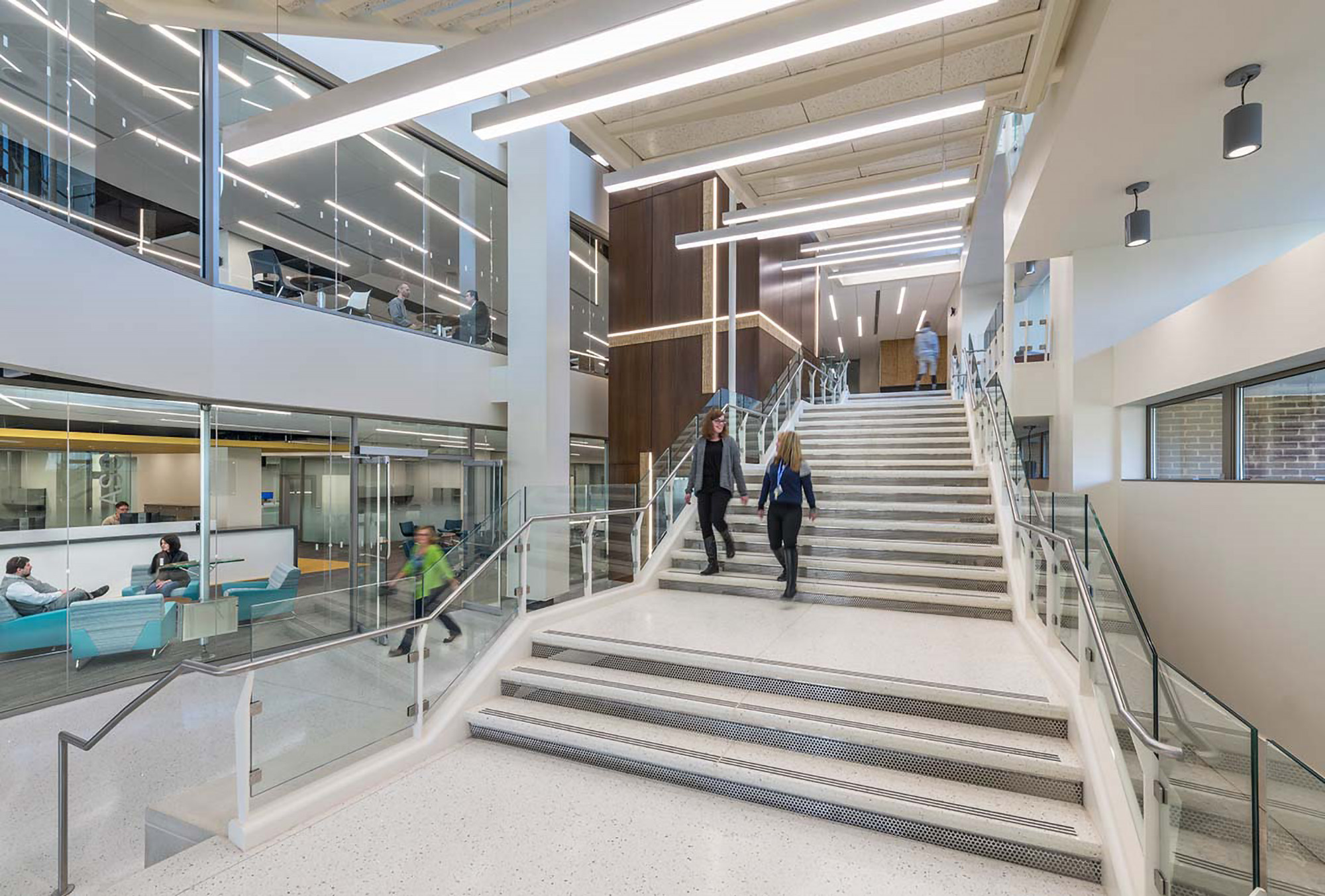
What will it take to make higher education campuses accessible to all? The answer, according to Wouk, boils down to two things: education and action.
“People with disabilities can internalize a negative stigma that others put on them,” he said. “The more we push back and don’t accept that negative stigma, the more we can educate people. Higher education institutions can’t just say accessibility is important or write it in their mission statement. They have to put dollars behind it and put it into action. Every higher education institution across the country needs to take that into consideration.”
Kowalk adds that architects and interior designers need to do their homework by researching and talking to people with disabilities. “There are things non-disabled people won’t know until they step into the shoes of those with disabilities. Once they understand how people with disabilities approach the world, then designers can respond with spaces that welcome everyone.”
More from Author
Legat Architects | Jun 5, 2023
How to achieve cost-effective kindergarten classrooms
Educational architect Robin Randall shares realistic advice about the challenges of adding developmentally appropriate, play-based kindergarten classrooms while respecting budget limitations.
Legat Architects | Dec 19, 2022
Ohio University’s OHIO Esports Arena redefines video gaming
If a college student enjoys film studies, there is probably a place on campus where they can join other film buffs. But where can students who like video games go?
Legat Architects | Nov 30, 2022
10 ways to achieve therapeutic learning environments
Today’s school should be much more than a place to learn—it should be a nurturing setting that celebrates achievements and responds to the challenges of many different users.
Legat Architects | Jun 20, 2022
An architectural view of school safety and security
With threats ranging from severe weather to active shooters, school leaders, designers, and security consultants face many challenges in creating safe environments that allow children to thrive.
Legat Architects | Apr 6, 2021
Architecture and daylight: Planning strategies for energy-efficient buildings
Energy efficient, healthy, and affordable: the predictable nature of seasonal daylight geometry makes it one of the first topics to be considered when undergoing any design project.
Legat Architects | Jul 28, 2017
Achieve hospitality architecture that impresses – Multigenerational appeal, local connections
Did guests get the experience that they paid for? This question has long haunted hotel operators.
Legat Architects | May 16, 2017
Architecture that helps children fall in love with the environment
The coming decades present a major ecological challenge... so let’s encourage the next generation to do something about it!
Legat Architects | Mar 30, 2017
Train station architectural design fundamentals: Accessibility
If safety is the number one priority for train stations, then accessibility comes in at a close second.



